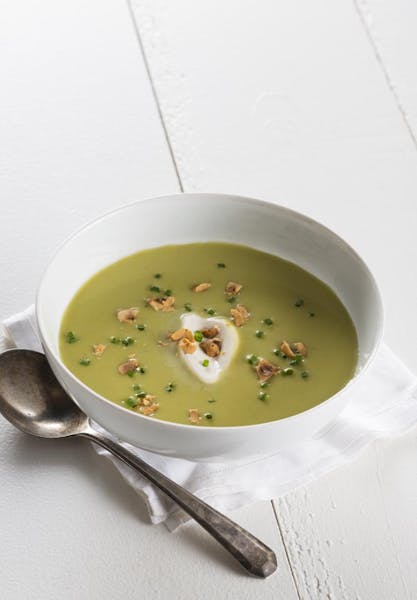It's been quite the year for Lenny Russo, who spent last spring prepping to represent Minnesota and its food at the Milan World Expo for the James Beard Foundation. Today he's a finalist for the sixth time for the Beard "Best Chef Midwest" award, to be announced in early May.
And now the chef/co-owner of Heartland restaurant is an author.
"I don't have a bucket list, but I definitely have a checklist, and this was one of the things I wanted to do," he said in an interview.
"Heartland: Farm-Forward Dishes From the Great Midwest" (Burgess Lea Press, 288 pages, $35), which arrives in bookstores in early May, is a call to action from Russo and a celebration of our region, in the form of stories, photos and recipes from one of our earliest proponents of local foods. (The book is available at his restaurant — 289 E. 5th St., St. Paul — and in pre-order sales at amazon.com.)
The spectacular artwork of Ojibwe artist George Morrison, a Minnesota native, appears throughout the book, including its cover. Profits from the book benefit Urban Roots, a St. Paul youth program focused on food.
Russo, a native of New Jersey, opened Heartland in 2002, dedicated to the principles of sustainability and local foods, with everything done in house, from vinegar to charcuterie. He offers a taste of those recipes in this new volume.
Q: What did you learn from the process of writing a cookbook?
A: It was a lot harder than I thought it was going to be, and it took a lot longer than I anticipated. I think it took a lot longer than the publisher anticipated! It took a long time to find a local photographer who was in sync with the vision that everyone had for the book and who understood it was going to take months to shoot this book. And then it was communicating to the publisher that we're in Minnesota. One of the responses I got from them was that there are so many cold-weather dishes in there. I guess there are, because it's cold here.
There were very grueling, sometimes 16-hour days on the computer, scaling down restaurant recipes to home use and tweaking them because not everything scales in proportion. And writing head notes and trying to conjure some reminder of why I originally created a recipe, sometimes over 20 years ago. Then I had to do narratives on all the farmers, not all of which got in the book, and a few little humorous tales.
Q: How does the book reflect your sense of the food system?
A: I wanted to call the book "Sustenance," and that's what I called the introduction. The publisher wanted the book to be affiliated with the restaurant. I was trying to communicate a message about how important it is to pay attention to your food — not just about eating and feeding your family, but how your food is being grown and by whom, and how it's being distributed and by whom, and the food system in general. That was one piece of it.
The other was the wonderful bounty here in the Midwest. We sometimes overlook how wonderful the ingredients are that we have here. Quite frankly, these are some of the best in the world. In many cases, when we're talking about specific ingredients, they are the best that are available. We have the best wild rice in the whole world. We have amazing livestock. We have incredible dairy.
Our wheat is the benchmark for the world. Our grains are just phenomenal, our buckwheat, corn, our barley, all the stuff that grows really well here, is the standard. I don't think we fully appreciate it because we live around it every day. We take it for granted. I was trying to communicate that message out there, and how appreciative I was and how I would like others to be appreciative of what our farmers bring us.
And then I wanted to talk about things that are just indigenous here — you might be able to find them in other places, but things that are pre-European contact — and how wonderful those things are. Heartland uses these things every day.
Q: What do you include under that?
A: Sunchokes; wild rice, obviously; wild mushrooms that are here; dandelions; bison; all the waterfowl; elk, moose and venison; the indigenous flora and fauna — the prickly ash tree, or bush, which produces what's called Szechuan peppercorns. People don't know that, but you can forage those. All the berries that grow wild here, maple syrup, wild plums. We use all that stuff here at Heartland in conjunction with post-European foods that are grown here, and livestock that came after the Europeans.
Q: You've been a proponent of local foods for decades. Why a book now?
A: Thirteen years ago, when we opened Heartland, buying from farmers who practice humane and sustainable agriculture while being good stewards of the land and paying fair trade and living wage were considered somewhat revolutionary ideas. This book communicates those ideas. It would have been nice to see it in a book back then, but I wouldn't have had the time.
Lee Svitak Dean is the Star Tribune's Taste editor. lee.dean@startribune.com • @StribTaste

